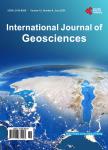Oceans, Ice &Snow and CO<sub>2</sub> Rise, Swing and Seasonal Fluctuation
Oceans, Ice &Snow and CO<sub>2</sub> Rise, Swing and Seasonal Fluctuation作者机构:Retired Chemical Engineer and Patent Attorney Pleasanton USA Biology & Environmental Science Granite Bay USA
出 版 物:《International Journal of Geosciences》 (地球科学国际期刊(英文))
年 卷 期:2016年第7卷第10期
页 面:1232-1282页
学科分类:08[工学] 0812[工学-计算机科学与技术(可授工学、理学学位)]
主 题:CO2 Rise Seasonal Fluctuation Ice & Snow Fossil Fuel Emissions Biology
摘 要:Carbon dioxide rise, swing and spread (seasonal fluctuations) are addressed in this study. Actual CO2 concentrations were used rather than dry values. The dry values are artificially higher because water vapor must be removed in order for the NDIR instrument to work and is not factored back into the reported numbers. Articles addressing these observations express opinions that are divergent and often conflicting. This investigation resolves many of those inconsistencies. The data were obtained from many measuring stations at various latitudes since 1972 and then graphical compared to changes in sea temperatures, fossil fuel emissions, humidity, and seasonal ice and snow changes. In analyzing the data, various parameters were addressed including: variability, R squared curve values, correlations between curves, residence times, absorption percentages, and Troposphere effects. Mass balance calculations were also made to corroborate viability. The CO2 “rise over a 33-year period from a slight ocean temperature increase (0.7°F) contributed 2.3 percent of the total rise while fossil fuel emissions contributed 1.5 percent. The overwhelming majority (60 ppmv, 96%+) was caused by other factors including ocean and land biology as well potential errors in fundamental hypotheses. With respect to “spread (seasonal CO2 fluctuations) at the Polar Circles, graphical analysis with high correlations supported by mass balance calculations confirm that ice and snow are the primary cause and explain why the concentrations are the highest at these cold locations. The global variations in “swing remain uncertain.



